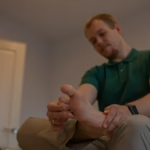Why Push Day Training Matters for Your Body
Did you know 46% of weightlifting injuries in the US are shoulder complex and improper push movement patterns are a leading cause? This is a big truth: while push day workouts are essential for upper body strength, they can be a source of chronic pain if done wrong.
This post will cover everything you need to know about push day workouts from a physio perspective. We’ll go over proper exercise technique, common injury patterns, body warning signs and evidence based strategies to keep you training safe and effective. Whether you’re a seasoned lifter or just starting out, understanding the biomechanics of push movements can transform your training results and protect your joints for years to come.
What Makes a Push Day Workout Effective
A push day workout is all about exercises that involve pushing movements away from your body. These movements target your chest, shoulders and triceps through coordinated muscle patterns.
The beauty of push day training is its functionality. Every time you push open a door, lift a box overhead or press yourself up from the ground you’re using these same muscle groups. By strengthening these patterns you’re not just building muscle you’re improving your daily movement.
The main muscle groups used in push exercises are the pectoralis major and minor in your chest, the anterior and lateral deltoids in your shoulders and the triceps brachii in your upper arms. Secondary stabilizers like the serratus anterior and rotator cuff muscles work behind the scenes to protect your shoulder joint during these movements.
Understanding this muscle interplay explains why push day workouts need to be programmed carefully. When one muscle group becomes stronger than its stabilizers injury risk increases. That’s why Physio Whisper advocates for balanced training that respects your body’s biomechanics.
Push exercises fall into three categories: horizontal pushing (like bench press), vertical pushing (like overhead press) and accessory movements (like tricep extensions). Each category challenges your muscles differently and requires specific form to do safely.
Recognizing When Your Body Needs Attention
Your body is always communicating during workouts but many people ignore the early warning signs until minor discomfort becomes major injury. Learning to distinguish between productive muscle fatigue and problematic pain is key to long term training success.
Sharp, localized pain during or immediately after pressing exercises means something is not right. This is different from the burning sensation of muscle fatigue which is more generalised and subsides quickly after your set is over.
Warning Signs:
- Sharp pain in front of your shoulder during pressing movements
- Clicking or popping in your shoulder joint without pain
- Soreness that lasts more than 72 hours after training
- Pain that gets worse with overhead movements or reaching across your body
- Numbness or tingling down your arm during exercises
- Decreased range of motion in your shoulder the day after training
- Pain that keeps you awake at night especially when lying on the affected side
A clinical case from a sports medicine clinic in California documented a competitive powerlifter who ignored anterior shoulder discomfort during bench press training. Minor irritation turned into a full subscapularis tendon tear over 6 months and required surgery and 9 months of rehab. This case published in sports medicine literature shows how early intervention could have prevented a career ending injury with simple technique adjustments and targeted strengthening.
If you experience any of these symptoms consistently, you need to get assessed by a physio. Early assessment by a physio can identify movement dysfunction before structural damage occurs.
Evidence-Based Approaches to Treatment and Relief
When discomfort hits, your response matters. Immediate management is about reducing inflammation while keeping mobility, then progressive rehabilitation to address the underlying causes.
The RICE protocol (Rest, Ice, Compression, Elevation) is still useful for acute injuries but modern physiotherapy emphasizes active recovery over complete rest. Total immobilization can lead to stiffness and longer recovery times.
Effective Relief Strategies:
- Ice for 15-20 minutes every 2-3 hours for the first 48 hours after injury
- Gentle range-of-motion exercises to maintain joint mobility without aggravating pain
- Resistance bands for controlled, low-intensity movements that promote blood flow
- Modify your training by reducing weight and focusing on perfect form
- Thoracic spine mobility work to improve shoulder positioning
- Address muscle imbalances by strengthening the posterior shoulder muscles
- Anti-inflammatory meds under medical guidance for acute flare-ups
Manual therapy techniques like soft tissue mobilization and joint manipulation can speed up recovery when done by qualified professionals. These interventions address restricted movement patterns and reduce muscle guarding that develops after injury.
Progressive loading is the key to rehabilitation. You’ll start with bodyweight movements, add resistance as pain decreases and movement quality improves. This builds tissue tolerance while retraining proper motor patterns.
What Current Research Reveals About Push Training
Recent studies into biomechanics, have totally flipped our thinking on how to program a killer push day. Research published in the Journal of Strength and Conditioning Research found out that how you position your shoulders when doing the bench press has a really big impact on injury risk – and a grip that’s 1.5 times as wide as the gap between your shoulder joints seems to get the right activation in your muscles without putting too much stress on your joints.
I was really interested to find out that your scapular control has a lot to do with push movements. The studies that used EMG found out that people who are getting shoulder pain tend to activate the serratus anterior muscle (which is a big stabilizer) later than people who are injury free. This makes sense – its a good idea to throw some scapular focused exercises into your warm-up on push day.
Researchers have come up with the idea of “training volume landmarks” recently. What theyve found is that doing more than 10 sets a session for a given muscle group is probably just going to increase the risk of injury without actually helping you get any stronger. Thats backed up by moderate volume, high frequency training being the way to go for sustainable gains.
One more thing that was pretty eye opening – studies on push to pull ratios recommend you’re doing 2 sets of push for every 3 of pull to keep your shoulders in good nick. That balances out the fact that most popular training programs focus really heavily on push patterns and leave you doing way too much.
Building Sustainable Strength Through Prevention
Prevention is always better than rehabilitation. By setting up some good safeguards you can keep making progress in your training without getting derailed by injuries.
Get a good warm up in place and you’ll prepare your nervous system, your muscles and your joints for what’s to come. Get in a 10-15 minute warm up before you even think about lifting heavy – it makes a big difference.
It’s always form over weight. Take a good look at your form by recording yourself doing sets from multiple angles – it’s easy to miss tiny errors in the heat of the moment. Common mistakes people make include arching their back too far, flaring their elbows & letting their shoulder blades go slack – all of which can be fixed with a bit of mindful practice.
Having a balanced programme saves you from getting all out of whack and getting injured. Every time you do a push exercise make sure you’re doing some corresponding pull movements to keep your back muscles strong – they help keep your shoulder joint stable and are super important in preventing injuries.
Recovery is just as important as how hard you’re training. A good night’s sleep, proper nutrition and managing stress all play a huge part in how quickly your body can recover & adapt. Not getting enough sleep is bad news – it messes up your muscle repair mechanisms and makes you more inflamed.
Getting some regular work in on your thoracic spine, shoulder capsule & wrist flexibility lays the foundation for good form in all your pressing exercises. But if you’ve got restricted mobility in any of those areas you’ll start getting some weird compensation movements that put a lot of strain on your joints.
Bringing It All Together: Your Path Forward
We’ve explored how push day workouts build essential upper body strength while requiring careful attention to technique and recovery. You’ve learned that nearly half of weightlifting injuries affect the shoulder complex, making proper form and balanced programming crucial for long-term success.
Recognizing warning signs early—sharp pain, persistent soreness, or joint clicking—allows timely intervention before minor issues become major setbacks. Treatment strategies combining active recovery, progressive loading, and addressing muscle imbalances provide the fastest path back to full training capacity.
Current research supports moderate training volumes, proper shoulder positioning, and maintaining a push-to-pull ratio that favors posterior chain development. These evidence-based insights optimize your results while protecting your joints.
Prevention through comprehensive warmups, technique refinement, balanced programming, and adequate recovery transforms your training from a potential injury risk into a sustainable strength-building practice. Your body adapts remarkably well to progressive challenges when you respect its biomechanical requirements.
Remember that your fitness journey extends beyond any single workout. Building strength safely requires patience, education, and willingness to modify approaches based on how your body responds. For more evidence-based training guidance and physiotherapy insights that help you train smarter, explore additional resources at Physio Whisper.
What adjustments will you make to your next push day workout to prioritize both performance and joint health?
References
- National Institute of Arthritis and Musculoskeletal and Skin Diseases – https://www.niams.nih.gov/health-topics/shoulder-problems
- Journal of Strength and Conditioning Research – https://journals.lww.com/nsca-jscr
- American Physical Therapy Association – https://www.apta.org/patient-care/evidence-based-practice-resources
- Sports Medicine Journal – https://link.springer.com/journal/40279
- National Strength and Conditioning Association – https://www.nsca.com/education/articles














